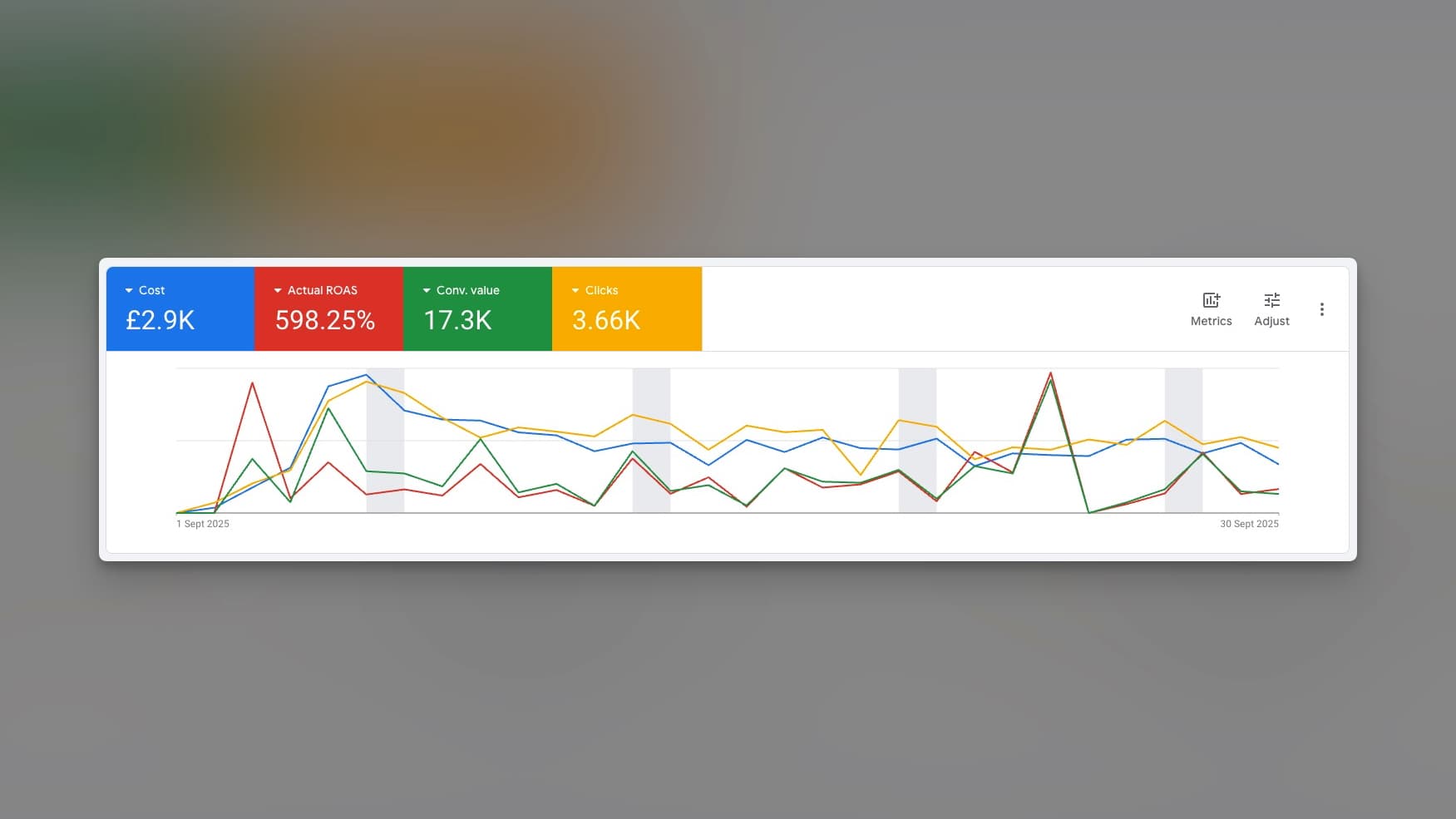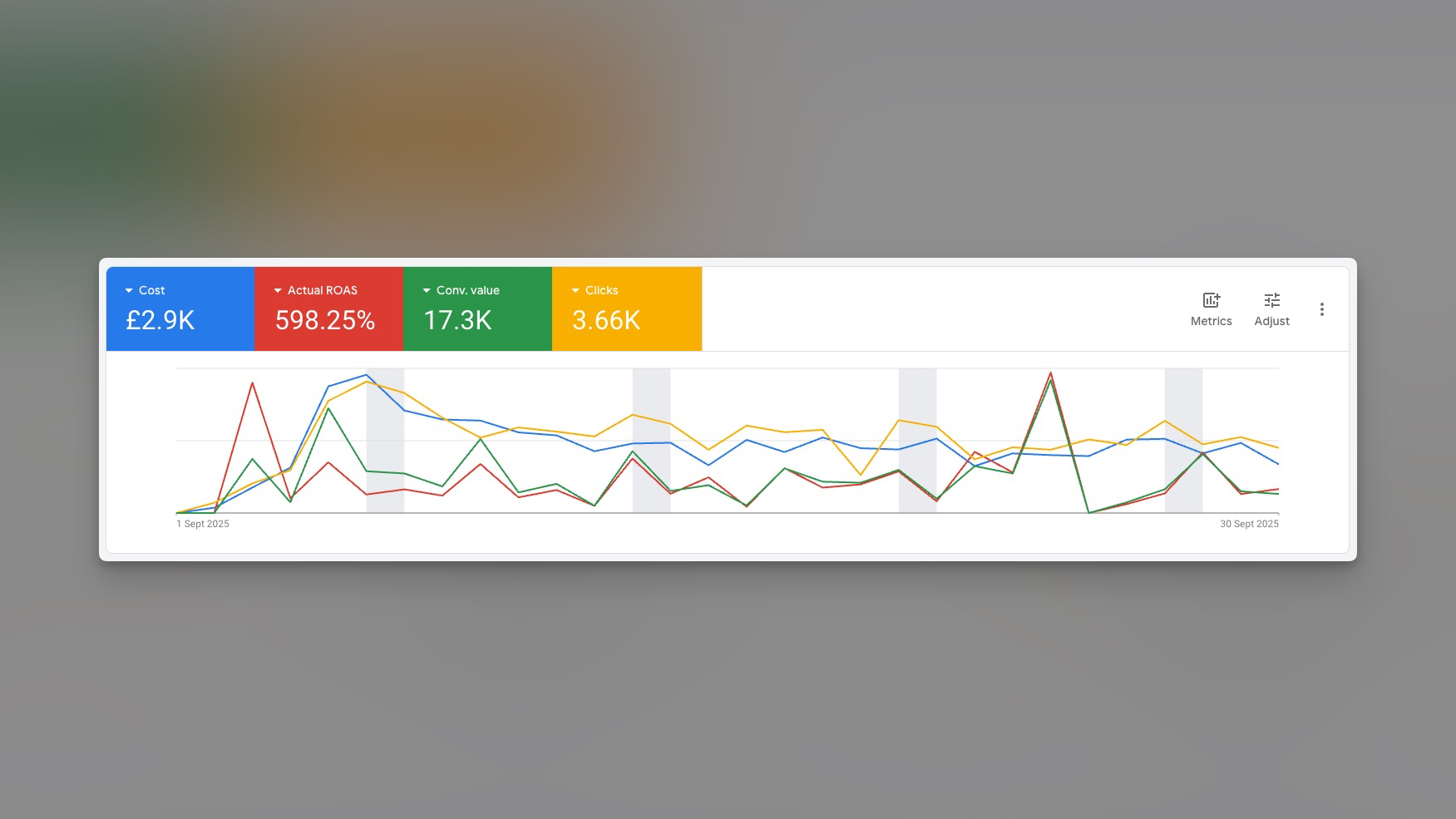
The Experience Idea Scorecard: 6 Ways to Know If Your Idea Is Worth Building
Validate your experience idea fast. Score WOW, delivery, scale, profit, brand, and venue flexibility to pick winners and ditch weak concepts.

Cut your cost per enquiry without raising budget. Learn how to match ad copy to landing pages, optimise for conversions, and streamline the journey from click to customer with clear, practical steps.
You don’t need a bigger budget to get better results. You need tighter alignment between what your ad promises, what your landing page delivers, and how easy it is for a visitor to take the next step.
When those three elements match, conversion rates rise and cost per enquiry drops.
Here's how to cut wasted spend by matching ad copy to landing pages, optimising pages for conversions, and refining the journey from click to customer.

Consistency is cheaper than complexity. If your ad promises one thing and your page delivers another, you’ll pay for clicks that don’t convert.
Start by mirroring the message. Your landing page headline should repeat the core keyword, audience, and promise from the ad so that a cold visitor instantly knows they’re in the right place.
Use the subhead to clarify the mechanism or value—explain why this works and who benefits most.
Match the call to action as well. If the ad says “Get a quote”, the page should also say “Get a quote”, not “Learn more” or “Request information”.
This continuity, often called keeping the scent, should extend to benefit language, imagery, and proof above the fold.
Finally, route by intent.
Build one focused landing page per ad group or theme, sending price‑seeking clicks to pricing or quote pages and demo‑ready clicks to demo pages.
If you see high click‑through rates but low conversion, poor message match is the likely culprit—rewrite the hero to mirror the ad, keep one primary CTA, and surface visible proof early.
Small, fast edits compound, and you can unlock them with a brief pass over the essentials.
Begin with headline clarity. In the first five seconds, your page should answer, “Is this for me, and why should I care?” Specific beats clever every time.
Then enforce a single primary CTA. Place it above the fold and repeat it modestly through the page, keeping the copy outcome‑oriented while avoiding other actions that compete at the same visual weight.
Move to proof, placing the right evidence where it counts. Put a review count or trusted logos above the fold to establish credibility, support your main benefit section with a case study or metric, and position a testimonial next to the form or price to address trust and return on investment with concrete specifics rather than vague praise.
On mobile, speed is non‑negotiable.
Aim for a fast first paint and a stable layout. Compress hero imagery, lazy‑load media below the fold, remove unused scripts, and defer non‑critical code to avoid stutter and layout shift.
Keep forms disciplined by asking only for information you will use immediately in the next step.
A short, single‑column layout with inline validation avoids frustration, while subtle friction reducers like privacy reassurance and, when relevant, a light progress indicator help completion without distraction.
Pre‑empt common objections with concise FAQs placed just above your final CTA, covering price, contract, time‑to‑value, support, data and security, cancellation, and suitability.
Close the loop with next‑step clarity. Tell visitors exactly what happens after they click, confirm their action on submission, and set expectations on timing.
For those not ready to commit, offer a low‑commitment alternative that doesn’t visually compete, such as previewing a sample or viewing a short walkthrough.
A simple structure helps.
Above the fold, combine your clear headline and subhead with one primary CTA, a proof element, and a short sentence setting expectations for what happens next.
Below the fold, outline specific benefits, add deeper proof, present a simple form, answer objections with FAQs, and finish with a reinforced CTA.
Think in flows, not fragments. Lower costs by aligning the entire path from impression to action.
Buy intent, not impressions, by prioritising high‑intent queries and audiences, and by reviewing search terms regularly to add negatives that cut waste.
Segment by promise so each ad group lands on a page with the same headline promise and CTA, rather than pushing every click to a generic catch‑all page.
Sequence your proof to build trust progressively: establish credibility early with review counts or recognisable logos, deepen confidence with named metrics and case studies in the middle, and resolve late‑stage doubts with a relevant testimonial near the form or price.
Shorten decision time by adding comparison blocks and objection‑busting FAQs close to your main CTA, and reduce anxiety by explaining exactly what happens after the click—especially for demos, quotes, and trials.
Respect device context by simplifying mobile forms, enlarging tap targets, and offering a way to continue on desktop, such as emailing the page to oneself.
Follow up without friction using light remarketing that addresses specific objections like time or price, rather than repeating generic creative that the visitor has already ignored.
Track a simple set of metrics weekly over a rolling four‑week window and act on trends rather than daily noise.
Visitors should be stable or growing modestly month on month; if they’re flat, experiment with one additional high‑intent channel.
Enquiries or bookings should be consistent with a gentle up‑trend; if they’re spiky, standardise your primary CTA and form and remove competing actions, and if you experience zero‑enquiry weeks, add a lower‑friction step such as an instant quote, sample, or callback.
Conversion rate from visitor to enquiry is your compounder; if you’re below your peer band for your model, fix the hero section, improve mobile speed and stability, shorten forms, strengthen proof, and clarify the CTA before touching budgets.
Cost per enquiry should remain steady or improve within your acceptable payback; if it rises, pause low‑intent terms and repair the page experience before reopening spend.
Time to enquire is a proxy for friction; aim for most actions within one to three visits or under seven days, and if lag extends, add reminders, clarify next steps, and reinforce proof near your CTAs.
Start by tightening intent and targeting. Add one exact or phrase match keyword that has proven to convert and exclude two recent time‑waster queries with negatives, then rebalance spend toward your highest‑intent sets.
Bring message match into line by creating one ad‑group‑specific landing page or rewriting a top page’s hero to mirror a winning ad’s keyword, promise, and CTA.
Strengthen proof by adding a quantified trust element above the fold and placing a relevant testimonial next to your form or pricing.
Improve speed by compressing the hero image, removing a non‑essential script, and deferring any code not needed for the first interaction.
Reduce form friction by removing one non‑essential field, using a single‑column layout with inline validation, and adding privacy reassurance near the button.
Finally, add a short line of microcopy beneath your primary CTA that explains exactly what happens after the click so visitors feel safe taking the next step.
Healthy sites show steady traffic rather than spikes, conversion rates that move into and then improve within your target band after small edits, and cost per enquiry that trends down or stays steady while volume rises.
Most actions happen within a week, with fewer return visits needed to decide.
Tighten the promise in your ads, reflect it precisely on your page, and make the next step obvious and low‑friction.
That’s how you lower advertising costs—without spending a penny more.
Share this post
About the author
I've spent the past decade working as a full-stack digital marketer & web developer in the experience sector. I plan, build, & scale revenue‑driving web experiences across development, SEO, PPC, and lead gen–all data-driven with analytics.
Read Next

Validate your experience idea fast. Score WOW, delivery, scale, profit, brand, and venue flexibility to pick winners and ditch weak concepts.

Learn what a CRM is, why it matters, and how 53° unifies contacts, timelines, pipelines, inboxes, and automations to move deals faster. Clear context, clean handoffs, fewer clicks.

We built 53° in four months while working full-time by cutting everything nonessential. Learn the focus-first system that drives real productivity.
Get started with a free trial and see how 53 Degrees can help you grow your business. get setup in 15 minutes.
Sign Up For Free